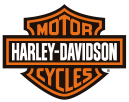How to Choose a Motorcycle Helmet
 Even the best bike helmets won’t do you any good if they don’t perform well during your riding. Part of this has to do with helmet fit and safety, and part has to do with your motorcycle and riding style. This short guide will help you figure out some of the important differences between helmets so that you can find the perfect one for your unique needs.
Even the best bike helmets won’t do you any good if they don’t perform well during your riding. Part of this has to do with helmet fit and safety, and part has to do with your motorcycle and riding style. This short guide will help you figure out some of the important differences between helmets so that you can find the perfect one for your unique needs.
Types of Motorcycle Helmets
When it comes to motorcycle helmet styles, one simple rule tells you almost everything you need to know: the more coverage, the more protection. For this reason, a full-face helmet will almost always be safer than a half helmet or three-quarters helmet. Half helmets sit on the top of the head but don’t extend down over the ears or down the neck. They’re designed to offer a breezier riding experience.
Three quarters offer a little bit more protection than half helmets, extending down the back of the neck and over the ears. Some models also feature small visors to keep sun and precipitation out of the rider’s eyes. Full face helmets offer the most protection and completely encapsulate the head. Having protection on the chin is extremely important because it’s one of the most vulnerable places during a crash, and it’s also the area most responsible for concussions when left unprotected.
Crash Safety
Once you’ve chosen the style of helmet you want, it’s important to review its crash test information. There are multiple independent testing bodies that review helmet crash safety and each of them operates under slightly different testing criteria. The standard and baseline for crash test safety is Department of Transportation (DOT) certification. This crash test rating demonstrates that a helmet provides adequate protection during a crash.
Riding Performance
You might prefer a motorcycle helmet with a visor, but if the visor on the helmet you choose doesn’t adequately keep the sun out of your eyes or fogs up when you ride, you’ll open yourself up to danger. Some helmets also feature elaborate decorations, such as spikes, fake dreadlocks, Halloween costume-type masks, or unusual covering materials. These might seem like a good idea, but in practice, they often distract from riding or feel weird to ride with. You won’t be able to know for sure until you ride with them.
Fit & Comfort
If a helmet slides down over your eyes or limits your field of vision while you ride, you could be asking for trouble. If the helmet isn’t properly ventilated, it might become so stuffy that you can’t wear it. If possible, try to take a ride with your helmet before buying it.
We hope that this buying guide to motorcycle helmets has been useful. For all your bike needs, visit Hideout Harley-Davidson in Joplin, MO. We proudly serve all those in Springfield, MO, and Rogers, AR.

